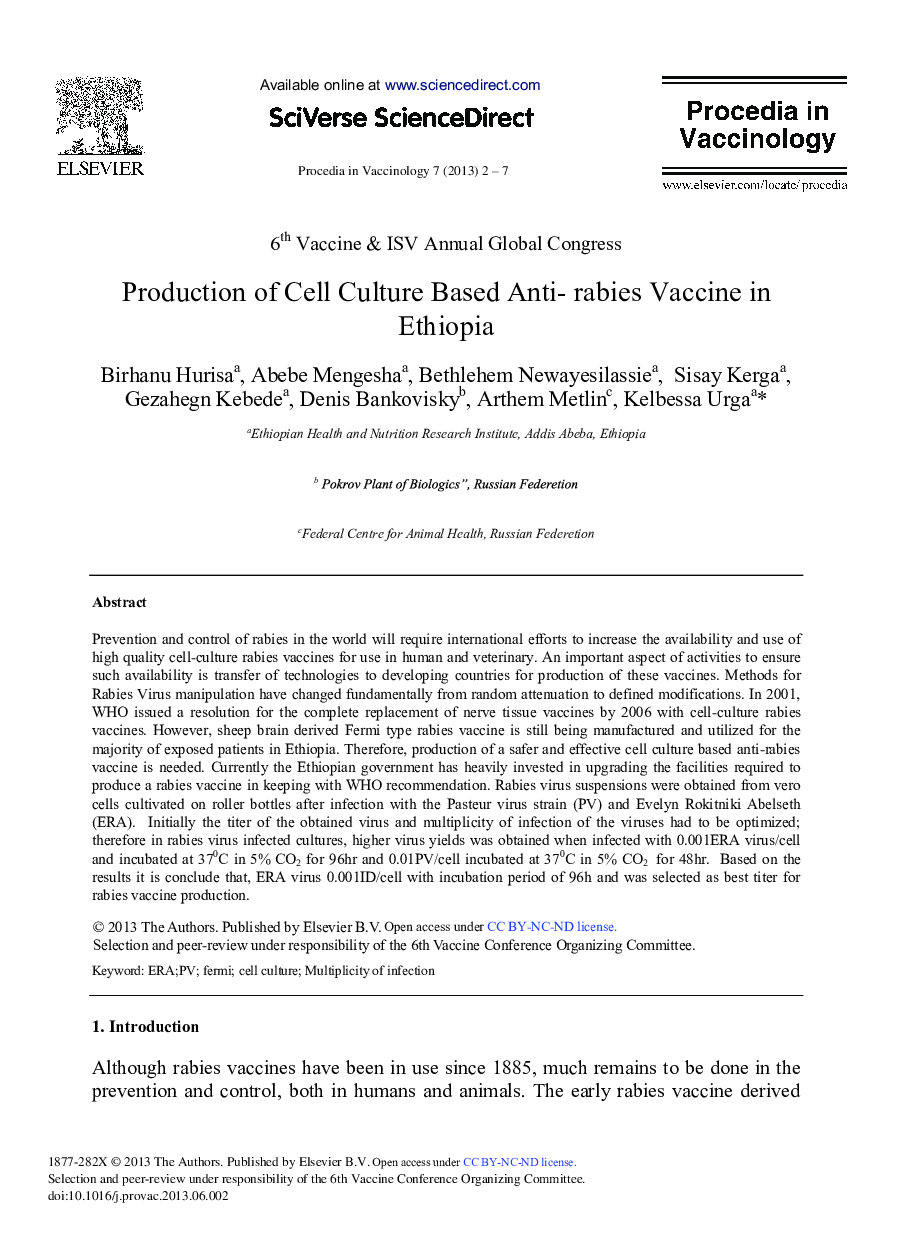| Article ID | Journal | Published Year | Pages | File Type |
|---|---|---|---|---|
| 2473831 | Procedia in Vaccinology | 2013 | 6 Pages |
Prevention and control of rabies in the world will require international efforts to increase the availability and use of high quality cell-culture rabies vaccines for use in human and veterinary. An important aspect of activities to ensure such availability is transfer of technologies to developing countries for production of these vaccines. Methods for Rabies Virus manipulation have changed fundamentally from random attenuation to defined modifications. In 2001, WHO issued a resolution for the complete replacement of nerve tissue vaccines by 2006 with cell-culture rabies vaccines. However, sheep brain derived Fermi type rabies vaccine is still being manufactured and utilized for the majority of exposed patients in Ethiopia. Therefore, production of a safer and effective cell culture based anti-rabies vaccine is needed. Currently the Ethiopian government has heavily invested in upgrading the facilities required to produce a rabies vaccine in keeping with WHO recommendation. Rabies virus suspensions were obtained from vero cells cultivated on roller bottles after infection with the Pasteur virus strain (PV) and Evelyn Rokitniki Abelseth (ERA). Initially the titer of the obtained virus and multiplicity of infection of the viruses had to be optimized; therefore in rabies virus infected cultures, higher virus yields was obtained when infected with 0.001ERA virus/cell and incubated at 37 °C in 5% CO2 for 96hr and 0.01PV/cell incubated at 37 °C in 5% CO2 for 48hr. Based on the results it is conclude that, ERA virus 0.001ID/cell with incubation period of 96 h and was selected as best titer for rabies vaccine production.
